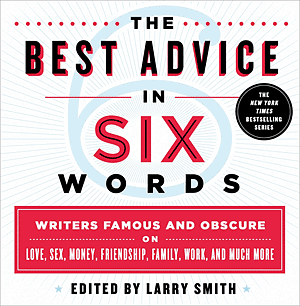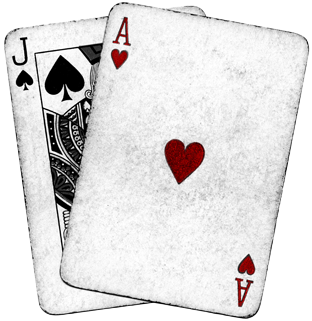A honey bee must tap two million flowers to make one pound of honey.
A typical American eats 28 pigs in his/her lifetime.
Americans spend approximately $25 billion each year on beer.
Americans spent an estimated $267 billion dining out in 1993.
An etiquette writer of the 1840’s advised, “Ladies may wipe their lips on the tablecloth, but not blow their noses on it.”
Astronaut John Glenn ate the first meal in space when he ate pureed applesauce squeezed from a tube aboard Friendship 7 in 1962.
Aunt Jemima pancake flour, invented in 1889, was the first ready-mix food to be sold commercially.
Caffeine: there are 100 to 150 milligrams of caffeine in an eight-ounce cup of brewed coffee, 10 milligrams in a six-ounce cup of cocoa, 5 to 10 milligrams in one ounce of bittersweet chocolate, and 5 milligrams in one ounce of milk chocolate.
California’s Frank Epperson invented the Popsicle in 1905 when he was 11-years-old.
Capsaicin, which makes hot peppers “hot” to the human mouth, is best neutralized by casein, the main protein found in milk.
China’s Beijing Duck Restaurant can seat 9,000 people at one time.
Chocolate contains phenylethylamine (PEA), a natural substance that is reputed to stimulate the same reaction in the body as falling in love.
Chocolate manufacturers currently use 40 percent of the world’s almonds and 20 percent of the world’s peanuts.
During the Alaskan Klondike gold rush, (1897-1898) potatoes were practically worth their weight in gold. Potatoes were so valued for their vitamin C content that miners traded gold for potatoes.
During World War II, bakers in the United States were ordered to stop selling sliced bread for the duration of the war on January 18, 1943. Only whole loaves were made available to the public. It was never explained how this action helped the war effort.
Fortune cookies were invented in 1916 by George Jung, a Los Angeles noodle maker.
Fried chicken is the most popular meal ordered in sit-down restaurants in the US. The next in popularity are: roast beef, spaghetti, turkey, baked ham, and fried shrimp.
Goulash, a beef soup, originated in Hungary in the 9th century AD.
Haggis, the national dish of Scotland: take the heart, liver, lungs, and small intestine of a calf or sheep, boil them in the stomach of the animal, season with salt, pepper and onions, add suet and oatmeal. Enjoy!
Hostess Twinkies were invented in 1931 by James Dewar, manager of Continental Bakeries’ Chicago factory. He envisioned the product as a way of using the company’s thousands of shortcake pans which were otherwise employed only during the strawberry season. Originally called Little Shortcake Fingers, they were renamed Twinkie Fingers, and finally “Twinkies.”
In 1860, ‘Godey’s Lady’s Book’ advised US women to cook tomatoes for at least 3 hours.
In 1926, when a Los Angeles restaurant owner with the all-American name of Bob Cobb was looking for a way to use up leftovers, he threw together some avocado, celery, tomato, chives, watercress, hard-boiled eggs, chicken, bacon, and Roquefort cheese, and named it after himself: Cobb salad.
In 1976, the first eight Jelly Belly® flavors were launched: Orange, Green Apple, Root Beer, Very Cherry, Lemon, Cream Soda, Grape, and Licorice.
In 1990, Bill Carson, of Arrington, Tennessee, grew the largest watermelon at 262 pounds that is still on the record books according to the 1998 edition of the Guinness Book of World Records.
In 1995, KFC sold 11 pieces of chicken for every man, woman and child in the US.
Americans consumed over 3.1 billion pounds of chocolate in 2001, which is almost half of the total world’s production.
In an authentic Chinese meal, the last course is soup because it allows the roast duck entree to “swim” toward digestion.
In the United States, a pound of potato chips costs two hundred times more than a pound of potatoes.
Large doses of coffee can be lethal. Ten grams, or 100 cups over 4 hours, can kill the average human.
Laws forbidding the sale of sodas on Sunday prompted William Garwood to invent the ice cream sundae in Evanston, IL, in 1875.
Mayonnaise is said to be the invention of the French chef of the Duke de Richelieu in 1756. While the Duke was defeating the British at Port Mahon, his chef was creating a victory feast that included a sauce made of cream and eggs. When the chef realized that there was no cream in the kitchen, he improvised, substituting olive oil for the cream. A new culinary masterpiece was born, and the chef named it “Mahonnaise” in honor of the Duke’s victory.
McDonald’s “Big Mac” slogan, introduced in 1975, is: “Two all beef patties, special sauce, lettuce, cheese, pickles, onions, and a sesame seed bun.”
McDonalds and Burger King sugar-coat their fries so they will turn golden-brown.
Mushrooms have no chlorophyll so they don’t need sunshine to grow and thrive. Some of the earliest commercial mushroom farms were set up in caves in France during the reign of King Louis XIV (1638-1715).
Nabisco’s “Oreos” are the world’s best-selling brand of cookie at a rate of 6 billion sold each year. The first Oreo was sold in 1912.
Per capita, the Irish eat more chocolate than Americans, Swedes, Danes, French, and Italians.
Persians first began using colored eggs to celebrate spring in 3,000 B.C. 13th century Macedonians were the first Christians on record to use colored eggs in Easter celebrations. Crusaders returning from the Middle East spread the custom of coloring eggs, and Europeans began to use them to celebrate Easter and other warm weather holidays.
Pine, spruce, or other evergreen wood should never be used in barbecues. These woods, when burning or smoking, can add harmful tar and resins to the food. Only hardwoods should be used for smoking and grilling, such as oak, pecan, hickory, maple, cherry, alder, apple, or mesquite, depending on the type of meat being cooked.
Potato chips are American’s favorite snack food. They are devoured at a rate of 1.2 billion pounds a year.
Potato chips were invented in Saratoga Springs in 1853 by chef George Crum. They were a mocking response to a patron who complained that his French fries were too thick.
Refried beans aren’t really what they seem. Although their name seems like a reasonable translation of Spanish frijoles refritos, the fact is that these beans aren’t fried twice. In Spanish, refritos literally means “well-fried,” not “re-fried.”
Research show that only 43% of homemade dinners served in the US include vegetables.
Rice is the staple food of more than one-half of the world’s population.
Saffron, made from the dried stamens of cultivated crocus flowers, is the most expensive cooking spice.
Since Hindus don’t eat beef, the McDonald’s in New Delhi makes its burgers with mutton.
Sliced bread was introduced under the Wonder Bread label in 1930.
Swiss Steak, Chop Suey, Russian Dressing, and a Hamburger all originated in the US.
Tequila is made from the root of the blue agave cactus.
The Agen plum which would become the basis of the US prune industry was first planted in California in 1856.
The average child will eat 1,500 PB sandwiches by high school graduation.
The bubbles in Guiness beer sink to the bottom rather than float to the top as in other beers.
The California grape and wine industries were started by Count Agoston Haraszthy de Moksa, who planted Tokay, Zinfandel, and Shiras varieties from his native Hungary in Buena Vista in 1857.
The color of a chile is no indication of its spiciness, but size usually is – the smaller the pepper, the hotter it is.
The daughter of confectioner Leo Hirschfield is commemorated in the name of the sweet he invented: Although his daughter’s real name was Clara, she went by the nickname Tootsie, and in her honor, her doting father named his chewy chocolate logs Tootsie Rolls.
The difference between apple juice and apple cider is that the juice is pasteurized and the cider is not.
The dye used to stamp the grade on meat is edible. It’s made from grape skins.
The English word “soup” comes from the Middle Ages word “sop,” which means a slice of bread over which roast drippings were poured. The first archaeological evidence of soup being consumed dates back to 6000 B.C., with the main ingredient being Hippopotamus bones!
The FDA allows an average of 30 or more insect fragments and one or more rodent hairs per 100 grams of peanut butter.
The first ring donuts were produced in 1847 by a 15 year old baker’s apprentice, Hanson Gregory, who knocked the soggy center out of a fried doughnut.
The fungus called truffles can cost $800 to $1,500 per pound. They are sniffed out by female pigs, which detect a compound that is in the saliva of male pigs as well. The same chemical is found in the sweat of human males.
The hamburger was invented in 1900 by Louis Lassen. He ground beef, broiled it, and served it between two pieces of toast.
The herring is the most widely eaten fish in the world. Nutritionally its fuel value is that equal to that of a beefsteak.
The hottest chile in the world is the habanero.
The ice cream soda was invented in 1874 by Robert Green. He was serving a mixture of syrup, sweet cream and carbonated water at a celebration in Philadelphia. He ran out of cream and substituted ice cream.
The largest item on any menu in the world is probably the roast camel, sometimes served at Bedouin wedding feasts. The camel is stuffed with a sheep’s carcass, which is stuffed with chickens, which are stuffed with fish, which are stuffed with eggs.
The largest living organism ever found is a honey mushroom, Armillaria ostoyae. It covers 3.4 square miles of land in the Blue Mountains of eastern Oregon, and it’s still growing
The Pillsbury Bake-off has been held every year since 1948.
The pound cake got its name from the pound of butter it contained.
The sandwich is named for the Fourth Earl of Sandwich (1718-92), for whom sandwiches were made so that he could stay at the gambling table without interruptions for meals.
The vintage date on a bottle of wine indicates the year the grapes were picked, not the year of bottling.
The white part of an egg is the albumen.
The white potato originated in the Andes mountains and was probably brought to Britain by Sir Francis Drake about 1586.
The world’s first chocolate candy was produced in 1828 by Dutch chocolate-maker Conrad J. Van Houten. He pressed the fat from roasted cacao beans to produce cocoa butter, to which he added cocoa powder and sugar.
The world’s costliest coffee, at $130 a pound , is called Kopi Luwak. It is in the droppings of a type of marsupial that eats only the very best coffee beans. Plantation workers track them and scoop their precious poop.
The world’s deadliest mushroom is the Amanita phalloides, the death cap. The five different poisons contained by the mushroom cause diarrhea and vomiting within 6 to 12 hours of ingestion. This is followed by damage to the liver, kidneys, and central nervous system – and, in the majority of cases, coma and death.
To determine the percentage of alcohol in a bottle of liquor divide the proof by two.
Truffles, or mushrooms that grow below the ground, are one of the world’s most expensive foods. One variety, Tuber melanosporum, can cost between $800 and $1,500 a pound.
Van Camp’s Pork and Beans were a staple food for Union soldiers in the Civil War.
Vanilla is the extract of fermented and dried pods of several species of orchids.
Watermelon is grown in over 96 countries worldwide. Over 1,200 varieties of watermelon are grown worldwide. There are about 200 varieties of watermelon throughout the US.
Watermelon, considered one of America’s favorite fruits, is really a vegetable (Citrullus lanatus). Cousin to the cucumber and kin to the gourd, watermelons can range in size from 7 to 100 pounds.
When Catherine de Medici married Henry II of France (1533) she brought forks with her, as well as several master Florentine cooks. Foods never before seen in France were soon being served using utensils instead of fingers or daggers. She is said to have introduced spinach (which “à la Florentine” usually means) as well as aspics, sweetbreads, artichoke hearts, truffles, liver crépinettes, quenelles of poultry, macaroons, ice cream, and zabagliones.
When honey is swallowed, it enters the blood stream within a period of 20 minutes.
When potatoes first appeared in Europe in the seventeenth century, it was thought that they were disgusting, and they were blamed for starting outbreaks of leprosy and syphilis. As late as 1720 in America, eating potatoes was believed to shorten a person’s life.
When Swiss cheese ferments, a bacterial action generates gas. As the gas is liberated, it bubbles through the cheese leaving holes. Cheese-makers call them “eyes.”











